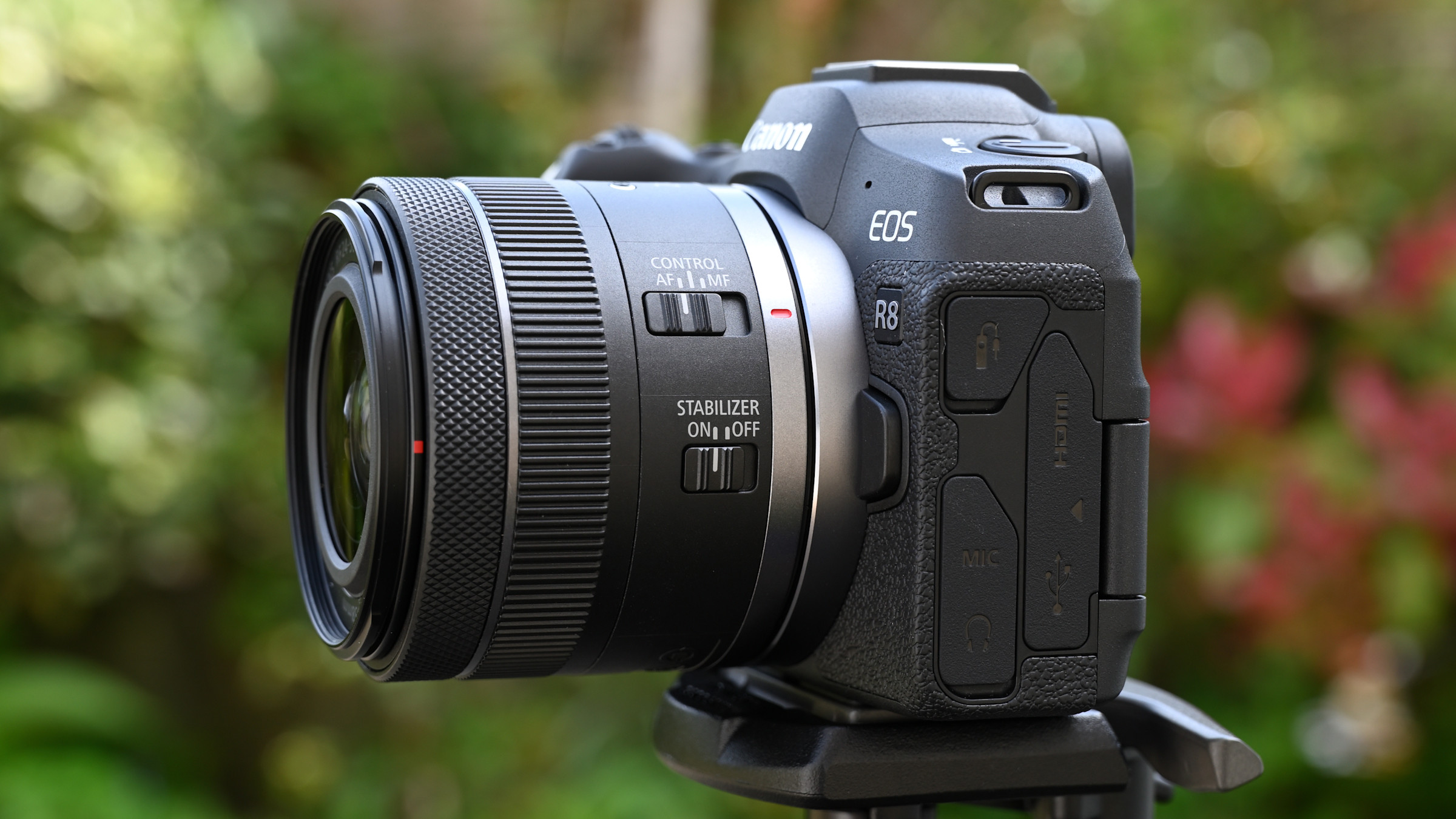
The Canon RF 24-50mm F4.5-6.3 IS STM is designed to take a load off. One of the big attractions of many mirrorless cameras is that they’re small. For travel and walkabout photography, that advantage is largely lost if you hang a big hefty lens on the front of it. This not-so-standard zoom is fairly short on actual zoom range and has a modest aperture rating but it packs wide-angle to standard focal range coverage, effective optical stabilization and ultra-quiet autofocus into an amazingly compact package that weighs in at just a few ounces.

Although new to the Canon line-up, it’s not unique as Nikon launched its NIKKOR Z 24-50mm f/4-6.3 back in 2020, which is physically even shorter and lighter. And just as that lens became a kit option for the Nikon Z 5 camera, the RF 24-50mm has become a kit lens for the EOS R8. There’s also something to be said for using it on Canon’s APS-C format R-system bodies, where it gives an ‘effective’ zoom range of about 38-80mm. If you don’t mind a drop in megapixel count, you can also switch to APS-C crop mode in full-frame cameras and get the same extended zoom range.
Specifications
Mount: Canon RF
Full-frame: Yes
Autofocus: Yes
Stabilization: Yes
Lens construction: 8 elements in 8 groups
Angle of view: 84 to 46 degrees
Diaphragm blades: 7
Minimum aperture: f/22-32
Minimum focusing distance: 0.3m (W) 0.35m (T)
Maximum magnification ratio: 0.11x (W) 0.19x (T)
Filter size: 58mm
Dimensions: 69.6x58mm (retracted)
Weight: 210g
Key features
This lens’s most standout key feature is compactness. It has a retractable design that shrinks the stowage length to just 58mm. That’s not much longer than the RF-S 18-45mm F4.5-6.3 IS STM for APS-C format Canon R-system cameras, which measures 44.3mm when retracted. And while the RF 24-50mm is more than 50 per cent heavier, it’s still amazingly lightweight for a full-frame compatible zoom, at 210g. To put that into perspective, the also ‘lightweight’ Canon RF 24-105mm F4-7.1 IS STM is 88.8mm long when retracted and weighs 395g – getting on for twice as heavy.
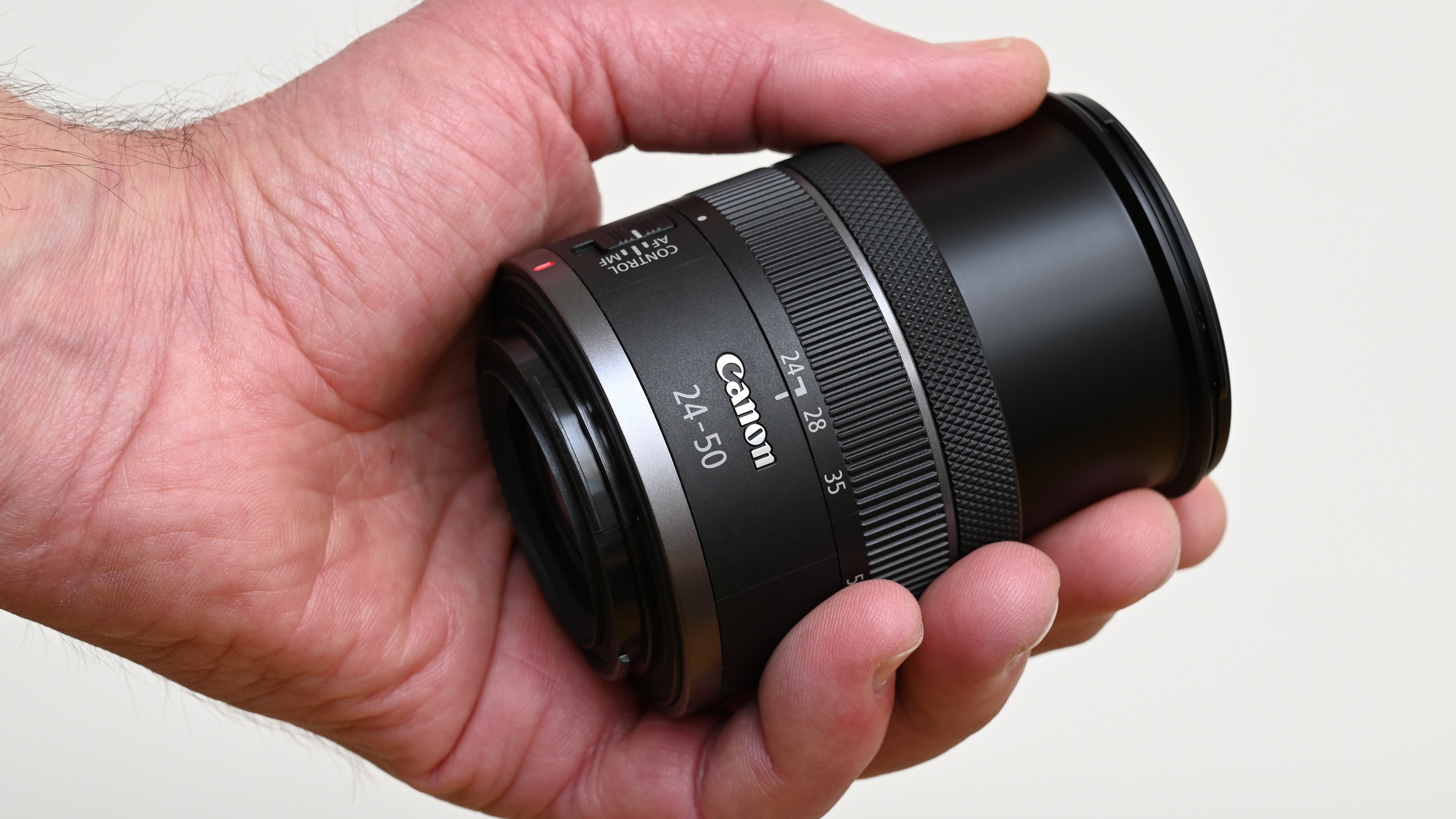
One of the main factors in downsizing is the lens’s lack of telephoto reach. There’s nothing wrong with wide-angle coverage, which stretches to an 84-degree viewing angle, but the lens runs out of stretch at the long end, topping out at a ‘standard’ 50mm. For many though, that’s not a problem. If you major on street, landscape and cityscape photography, you’re likely to find the zoom range entirely adequate, and it also works well for vlogging.
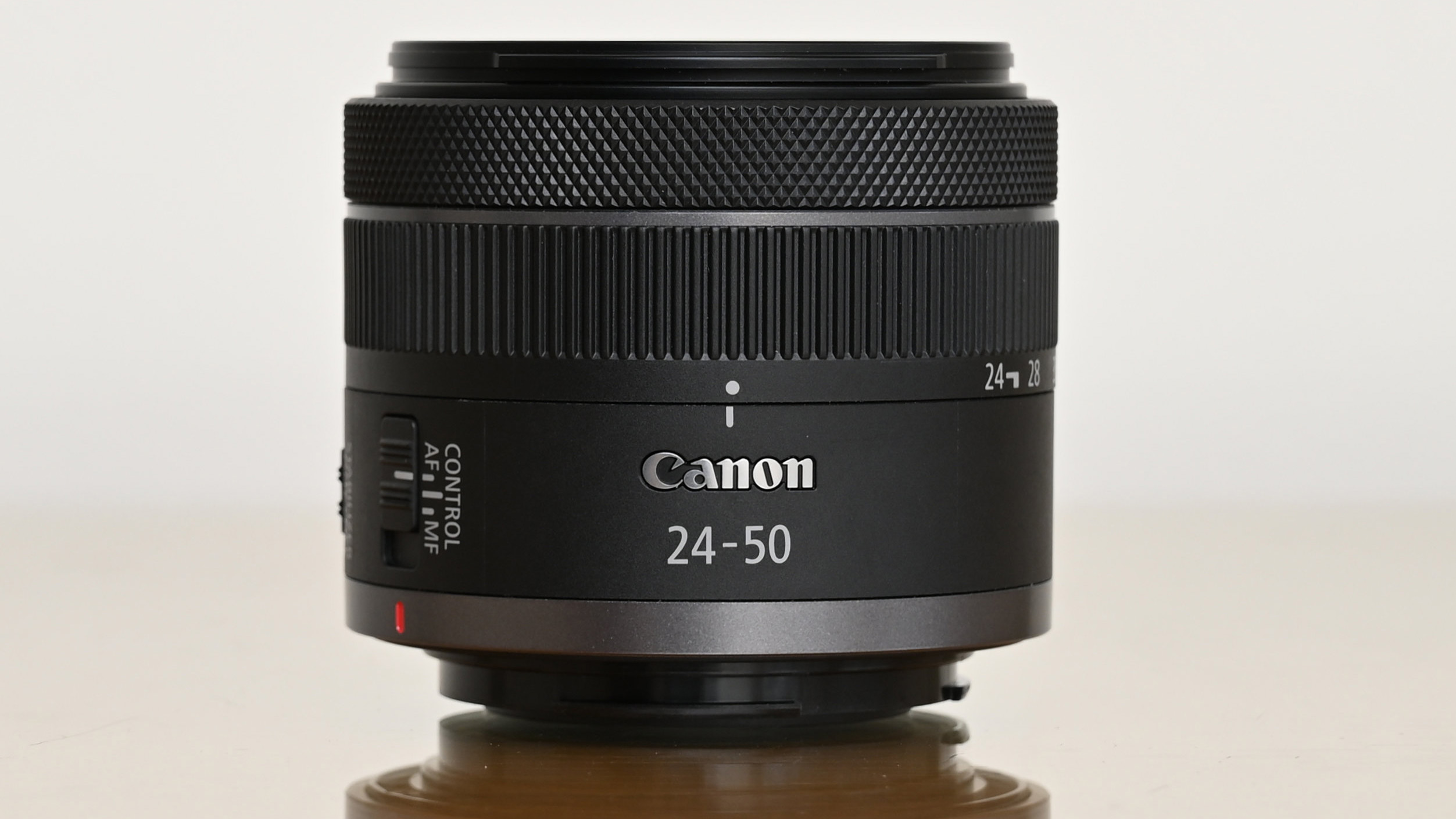
Another plus point for both stills and video capture is that the stepping motor-based autofocus system is quick and snappy, while also enabling smooth, virtually silent focus transitions for shooting movies.
Given that the original EOS R and RP cameras had no in-body stabilization, the optical stabilizer featured in this lens is a useful addition. And the advantage isn’t limited to these two cameras. The stabilizer has 4.5-stop effectiveness in its own right, rising to a 7-stop advantage when mounting the lens on a body that features IBIS (In-Body Image Stabilization).
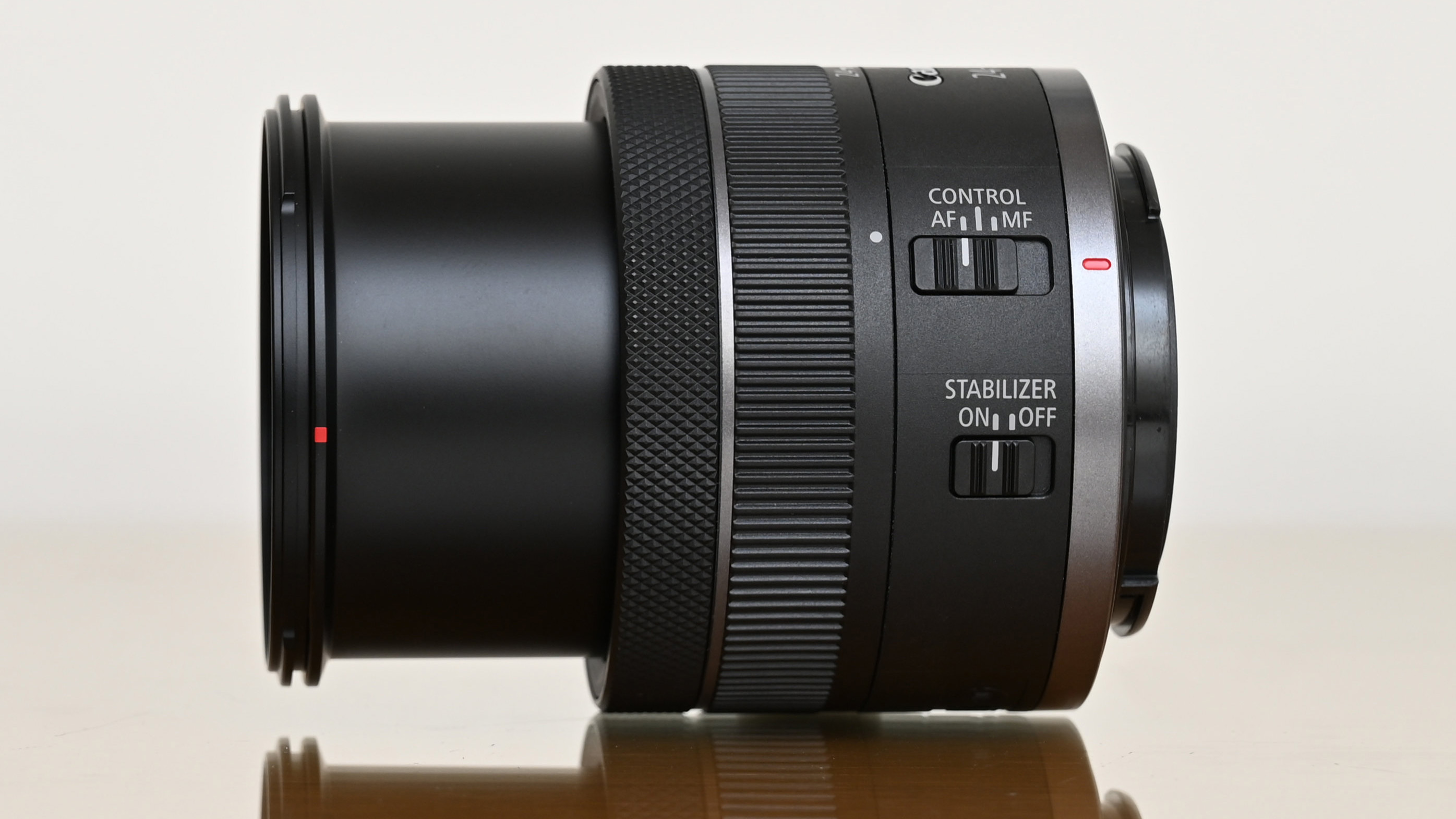
The optical path features just eight elements in total, including two precision-molded aspherical element to enhance image quality as well as to reduce the size and weight of the lens. Canon’s heritage Super Spectra coating is applied to reduce ghosting and flare.
Build and handling
Typical of Canon’s lower-budget RF lenses, build quality feels pretty solid but there are no weather-seals. This one’s a little less solid than some, as it features a plastic rather than metal mounting plate, which helps to keep the weight to a minimum.
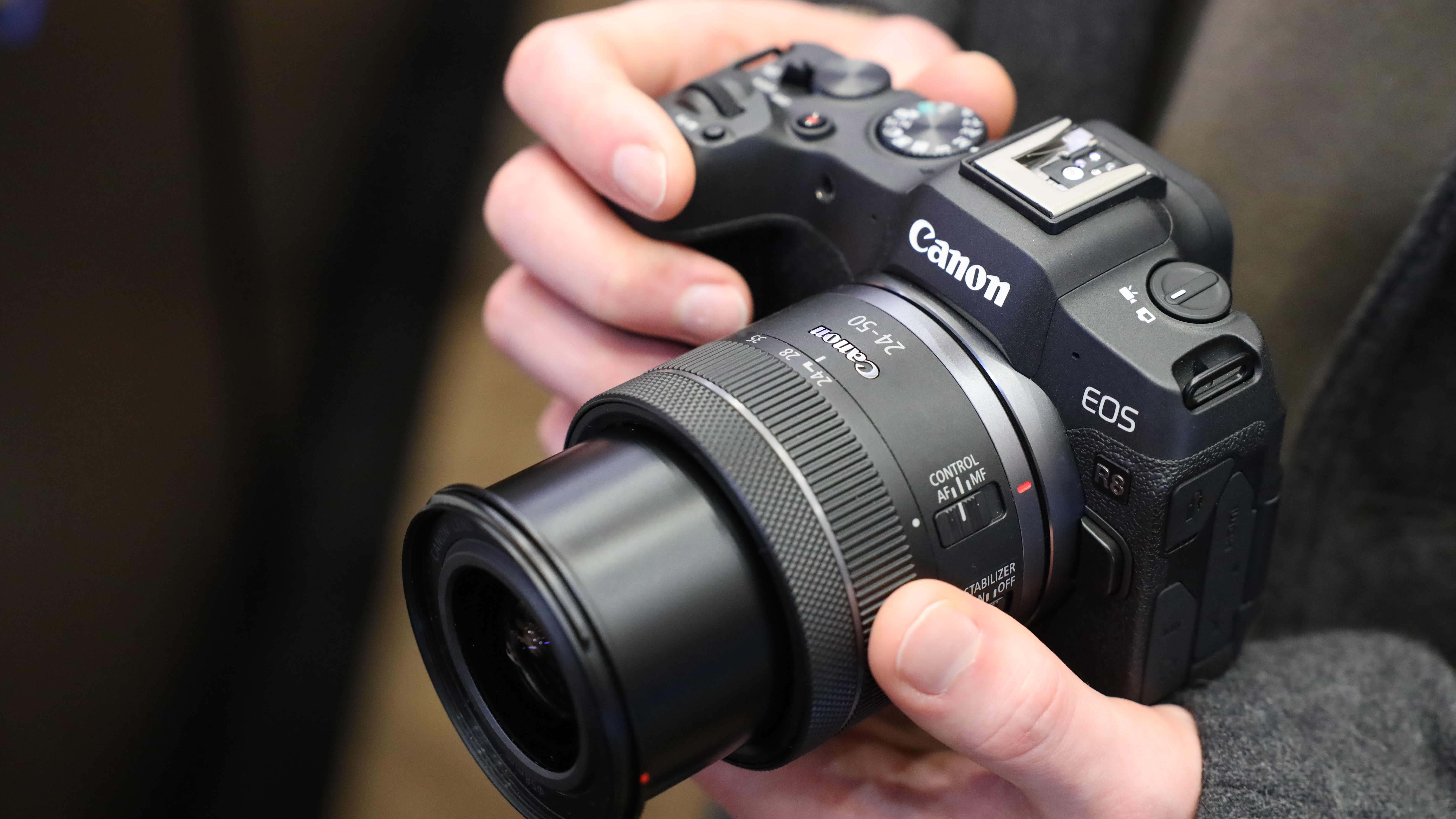
Although it’s very compact in its retracted state, the lens almost doubles in length when extended for shooting. It’s physically longest at the 24mm end of the zoom range, the inner barrel receding a little at mid-zoom settings and extending again towards the 50mm mark.
Two switches are fitted to enhance handling, which saves dipping into camera menus. One is a Stabilizer On/Off switch, the other is a 3-pole switch for AF/Control/MF. As well as giving direct access to autofocus with manual override and fully manual focusing, the Control option enables the focus ring to be assigned to other customizable functions like aperture, exposure compensation and ISO adjustments. The focus ring itself is rather small, in keeping with the diminutive size of the lens, but operates smoothly with the now typical electronic coupling.
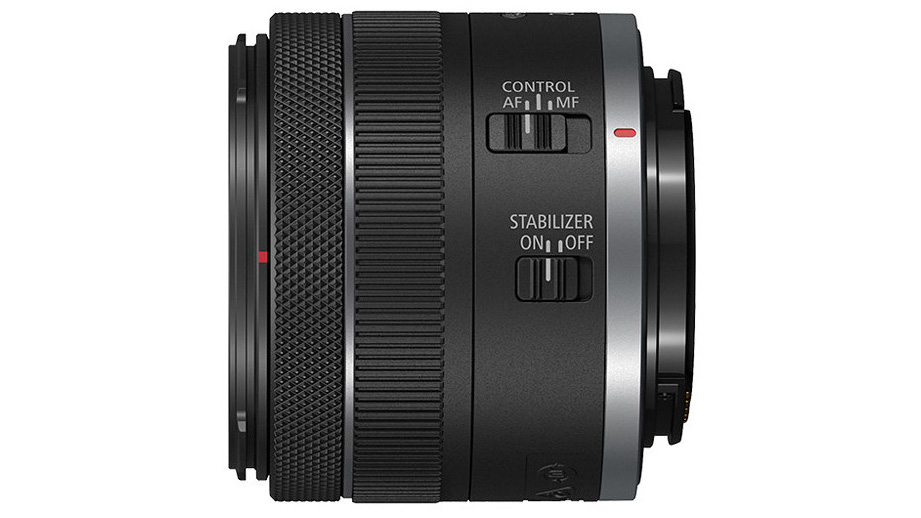
One thing that’s lacking, as usual with Canon’s non-L-series lenses, is a lens hood, which is sold separately.
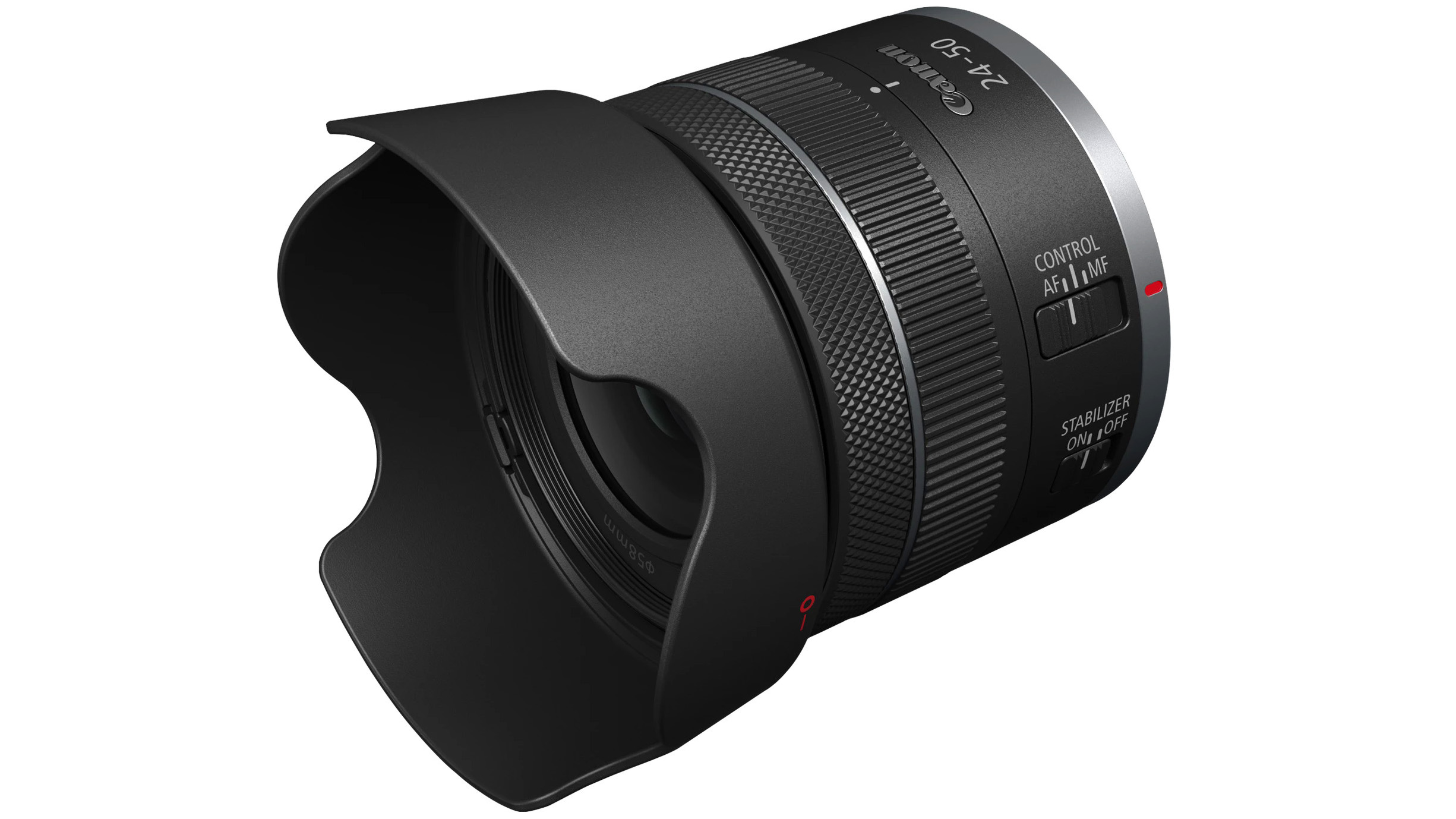
Performance
In our real-world testing, sharpness proved very good (rather than entirely great) throughout the zoom range. Center-sharpness isn’t as impressive as with other Canon RF standard zooms that we’ve tested but levels of sharpness are remarkably uniform across the whole image frame, right out to the edges and corners. They’re also very consistent throughout the whole zoom range. In practical terms, the highly effective optical image stabilizer helps to maintain consistent sharpness in handheld shooting, even at slow shutter speeds. After all, there’s little point in having a really compact, featherweight lens if you need to lug a tripod around.
Lateral chromatic aberration towards the edges and corners of the frame is minimal at all zoom settings, and automatic in-camera correction is available anyway. The lens relies entirely on auto correction for distortions, especially in the 24-35mm sector of the zoom range. This can’t be switched off in-camera and without auto correction for distortion, the lens is basically unusable. That’s by no means uncommon in recent lenses designed for mirrorless cameras.
The speed and accuracy of the linear stepping motor autofocus system is impressive for stills and lives up to its billing of delivering smooth autofocus transitions when shooting video. Overall, performance is impressive, considering the compact and ultra-lightweight design of the lens. However, the modest aperture rating is a minus point for gaining a tight depth of field and for maintaining quick shutter speeds under low lighting levels for freezing motion.
Sample images










Lab results
We run a range of lab tests under controlled conditions, using the Imatest Master testing suite. Photos of test charts are taken across the range of apertures and zooms (where available), then analyzed for sharpness, distortion and chromatic aberrations.
We use Imatest SFR (spatial frequency response) charts and analysis software to plot lens resolution at the center of the image frame, corners and mid-point distances, across the range of aperture settings and, with zoom lenses, at four different focal lengths. The tests also measure distortion and color fringing (chromatic aberration).
Sharpness:
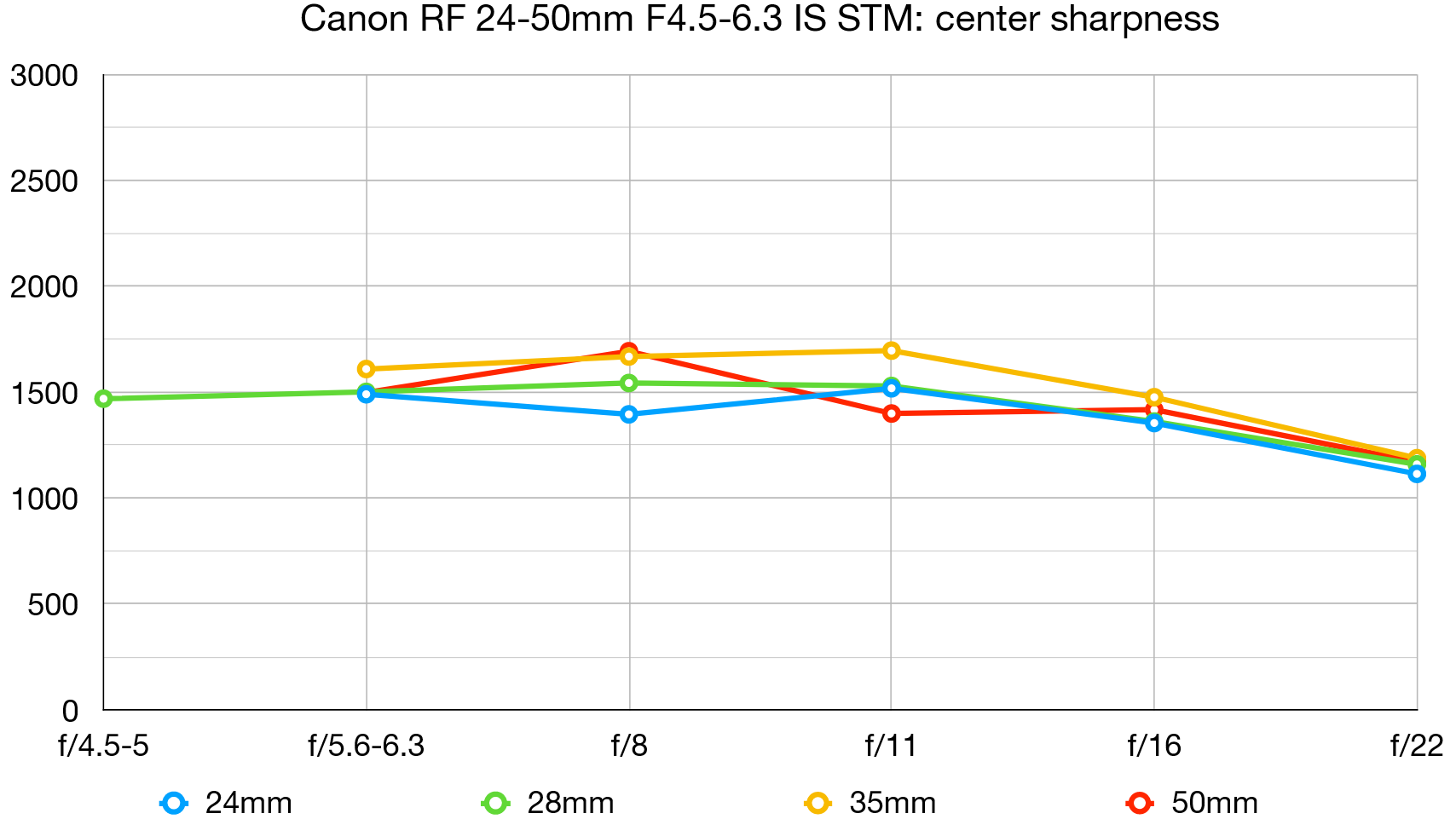
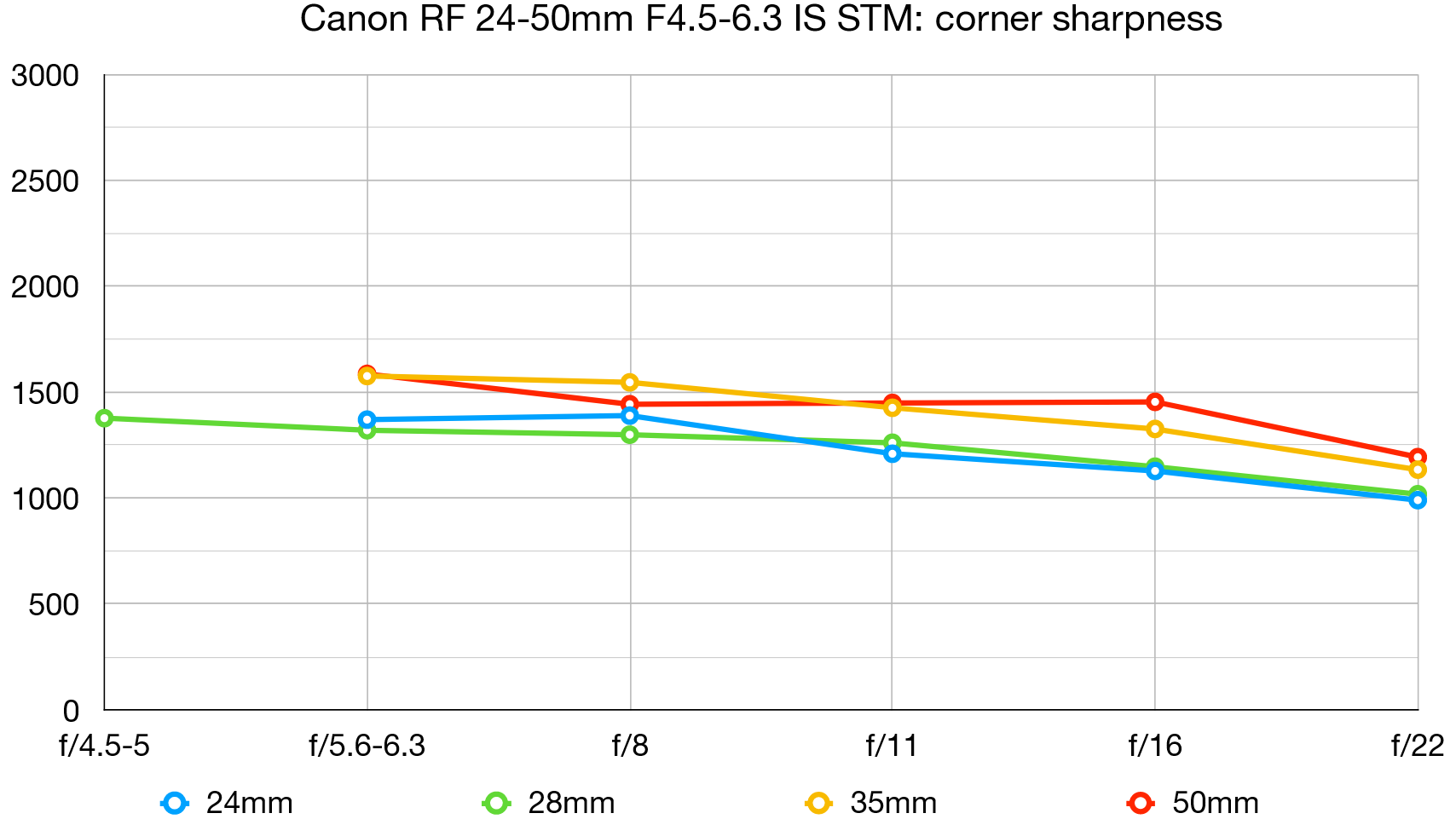
It’s not the sharpest tool in the box for Canon RF standard zooms. Levels of center-sharpness proved a little underwhelming in our lab tests but, on the plus side, sharpness is remarkably consistent across the whole image frame and throughout the entire zoom range. It only really drops off noticeably when using the narrowest available apertures, due to diffraction, which is entirely common.
Fringing:
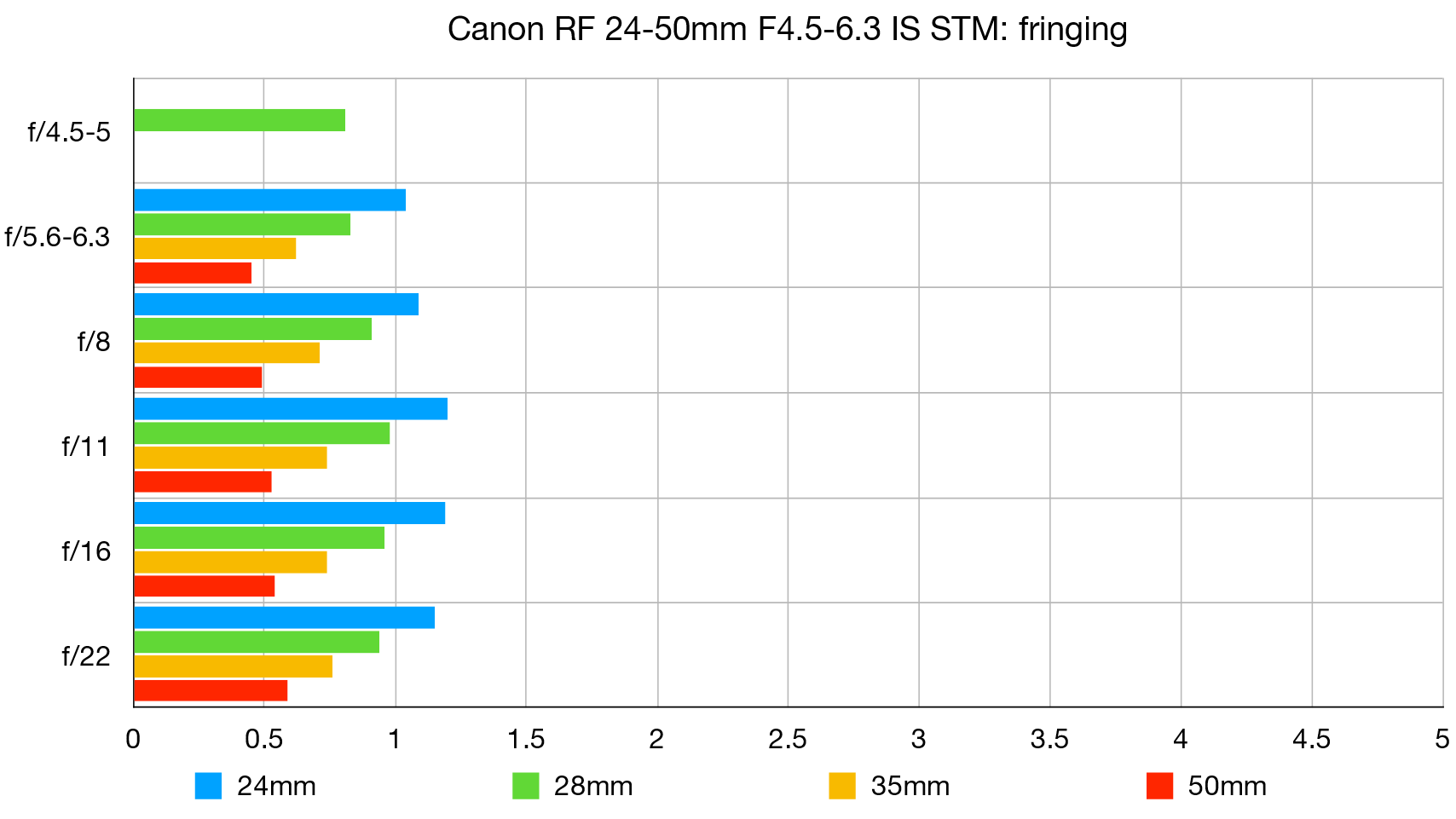
The lens does well to control color fringing, with minimal lateral chromatic aberration even out at the edges and corners of the frame. That holds true at all focal lengths and aperture settings, even with in-camera correction disabled.
Distortion:
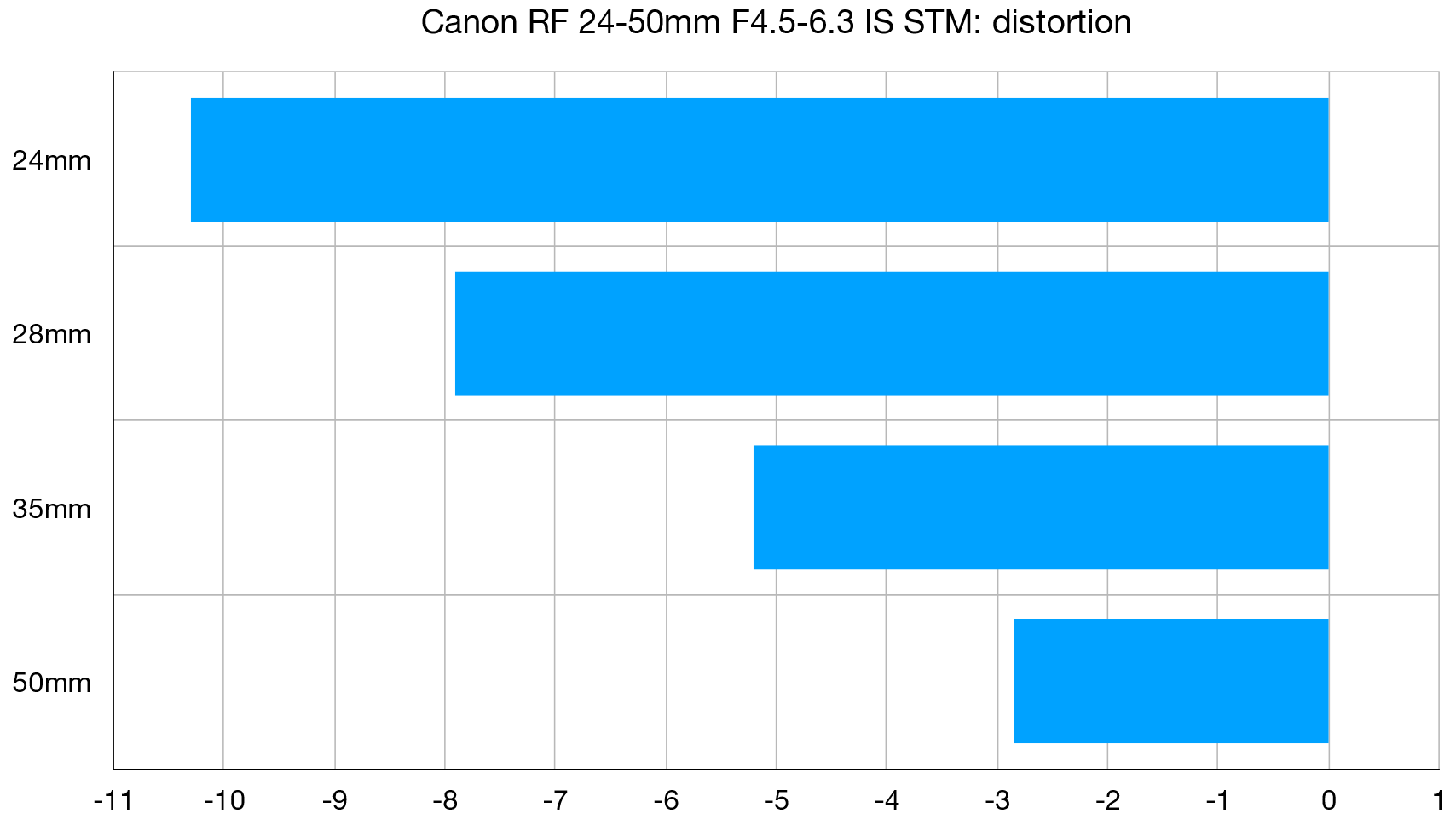
Like many compact lenses designed for mirrorless cameras, including several from Canon, this one relies entirely on in-camera correction for distortion, which can’t be switched off in menu settings. Disabling correction at the RAW image processing stage reveals very extreme barrel distortion in the 24-35mm sector of the zoom range, and it’s still very pronounced at 35mm, and easily noticeable at 50mm.
Verdict
If you’re walking the city for street snaps, trekking into challenging terrain for landscape opportunities, or jetting off on your travels, a small lightweight camera is the order of the day. Full-frame compatible zoom lenses don’t get any smaller than this and while it doesn’t stretch into telephoto territory, wide-angle and standard focal lengths are covered in style, complete with effective optical stabilization and snappy, near-silent autofocus. It’s a lens that truly punches above its weight, although the modest aperture rating can be a limiting factor.
Read more:
• Best camera lenses to get
• Best Canon lenses
• Best Nikon lenses
• Best Sony lenses







